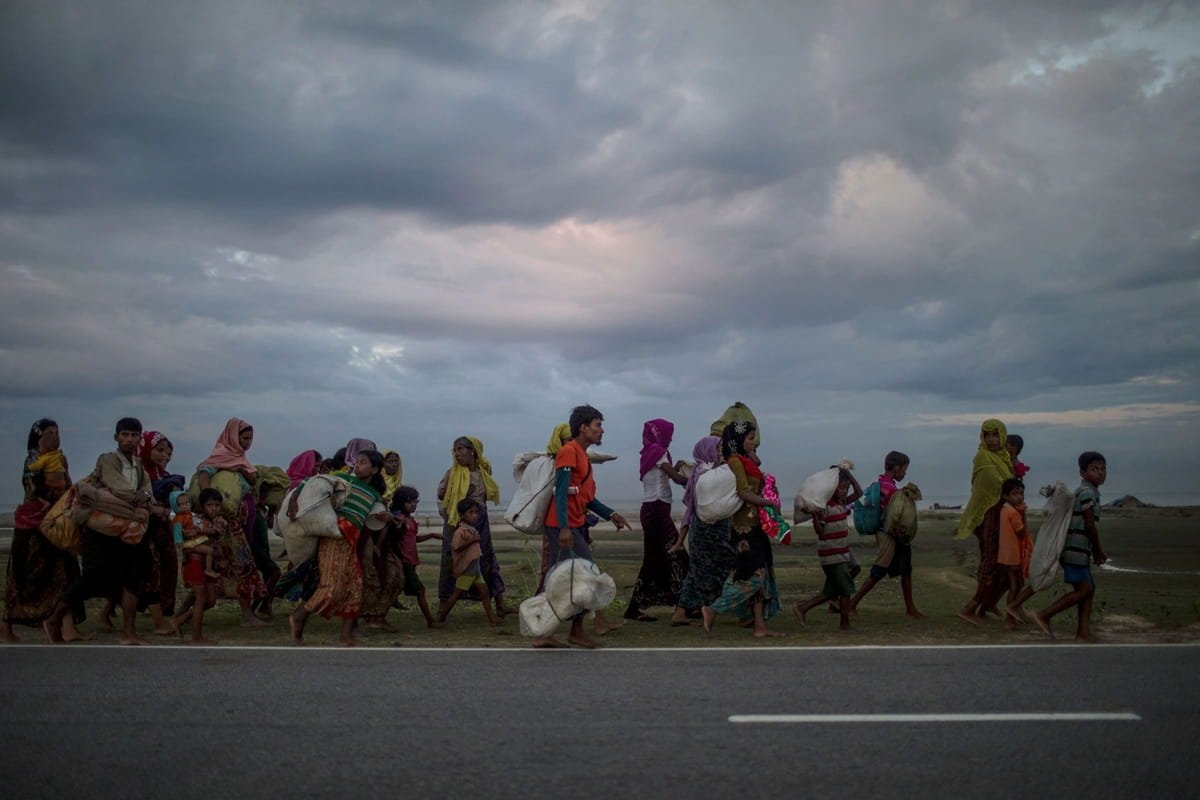Climate change is no longer a peripheral concern; it has evolved to define force in international relations, reshape how states perceive alliances, project influence, and frame national interests. This shift is more pronounced in South Asia, where a quarter of the world’s population resides, characterized by extreme climate vulnerability and persistent geopolitical fault lines. While this region requires a unified approach, states are pursuing divergent paths in climate diplomacy.
At the COP29, South Asia was estimated to require US$625 billion by 2030 to triple renewable energy capacity. Bangladesh, India, and Pakistan, which are shaped by historical injustice, developmental constraints, and global security, have embedded climate change in their foreign policy in distinct ways. They demonstrate that climate diplomacy currently serves as both an instrument of survival and influence.
Bangladesh
Bangladesh, which continually transforms existential threats into diplomatic leverage, frames vulnerability as a moral and practical concern, where Dhaka is marked as a voice of climate-vulnerable nations. Bangladesh’s contribution to the Climate Vulnerable Forum (CVF) and the LDC Group enables it to influence global climate governance and link finance with historical responsibility.
Recent approaches, like the Bangladesh Climate and Development Platform (BCDP), launched in December 2023, channel multi-donor investment to accelerate adaptation and mitigation projects. Bangladesh visibly pioneered the operationalization of the Loss and Damage Fund at the COP28, which discloses not only Bangladesh’s aspiration but also the ability to translate moral authority into concrete outcomes.
Yet, limited engagement remains in South Asia due to the inactive environmental agenda of the SAARC that forces Dhaka to depend on the global coalitions and decisions. If cross-broader initiatives were strengthened, Bangladesh’s influence could amplify or reinforce regional climate resilience.
Read More: Climate, Health, Food Crises Demand Global Cooperation via One Health Diplomacy
India
India plays a dual role as a developing country and a rising power. While asserting global leadership, stand strongly on “common but differentiated responsibilities”. India’s initiatives like the International Solar Alliance (ISA) and the Coalition for Disaster Resilient Infrastructure (CDRI) reflect its ambition to shape energy transitions and showcase technological prowess. India maintained a gradual fossil fuel phase-down at the COP28 and COP29.
This stance marks the tension between equity claims and national development aspirations. India’s influence is significantly uneven. On the one hand, SAARC’s environmental programs have stagnated. On the other hand, BIMSTEC initiatives are overshadowed by security and connectivity priorities. Although Bangladesh is in coalition-driven diplomacy, India’s regional engagement is sporadic, leaving neighbors reliant on unilateral decisions. Its global leadership is clear, but regional solidarity remains elusive, which highlights a critical gap for credibility in the Global South.
Pakistan
Most of the time, Pakistan’s climate diplomacy is driven by crisis. Pakistan elevated its global voice with priority and amplified pledges for adaptation and relief financing only after the hazards of the 2022 flood, when 33 million people were displaced. At COP29, Pakistan became the first Asian country to access the Global Shield against Climate Risks, achieving pre-arranged financial support for disaster response.
However, Pakistan’s engagement becomes episodic as its climate diplomacy peaks during disasters but wanes in calmer periods. Its sustained action is constrained due to the domestic instability and financial dependency that limit its ability to institutionalize climate advocacy. If Pakistan embedded a climate strategy within its foreign policy, it would be able to convert temporary sympathy into long-term leverage.
Different Paths, Shared Challenges in South Asian Climate Identity
Bangladesh, India, and Pakistan mark noticeably different ways. However, they demonstrate how climate diplomacy now functions as a foreign policy instrument in South Asia. Bangladesh adopts a survival strategy (how to survive within climate impacts, focusing on adaptation), India operates a power-projection tool (victim as a developing country and energy producer as rising power, balancing strategy), and Pakistan follows a crisis-response mechanism (active only during disasters, paradoxical in decision making).
All invoke postcolonial narratives of injustice, yet their capacity to translate these claims into sustained foreign policy differs, shaped by economic strength, governance, and strategic vision.
Read More: Polycentric Governance and the Future of Climate Finance for Bangladesh
Besides, regional coherence is limited. India-Pakistan rivalry and asymmetrical power dynamics undermine collective bargaining, while SAARC and BIMSTEC fail to provide robust frameworks for cooperation. In the past two decades, over 750 million South Asians have experienced climate disasters, yet the region’s collective vulnerability has not translated into a unified diplomatic voice.
Shared vulnerability offers an opportunity for a cohesive regional climate strategy. Bangladesh, leveraging moral authority, could act as a convener to bridge political divides. India could align global ambition with regional responsibility, enhancing its credibility. Pakistan could institutionalize climate diplomacy to ensure that international support leads to durable outcomes.
For global partners, understanding these divergent strategies is essential. Supporting Bangladesh’s coalition diplomacy, incentivizing India’s regional engagement, and strengthening Pakistan’s institutional capacity would yield more sustainable results than one-size-fits-all solutions.
Overall, South Asia’s climate diplomacy illustrates the interplay between vulnerability and agency. Moreover, within structural constraints, states are embedding climate action into foreign policy in distinct ways. Yet fragmentation persists, limiting the region’s global influence. Recent early-season heatwaves in India and Pakistan, Delhi exceeding 40°C and Sindh nearing 50°C in April 2025, underscore the urgency.
The region faces a defining choice: continue on divergent paths or forge a collective voice that strengthens South Asia’s place in global climate governance. The time for fragmented diplomacy is rapidly running out.
*The views expressed in this article are the author’s own and do not necessarily reflect the editorial policy of TDI.

Akash Ali
Akash Ali is an independent researcher specializing in climate diplomacy, global politics, and IR. He is currently associated with the University of Rajshahi, Bangladesh. He can be reached at akashali2000.ru@gmail.com



